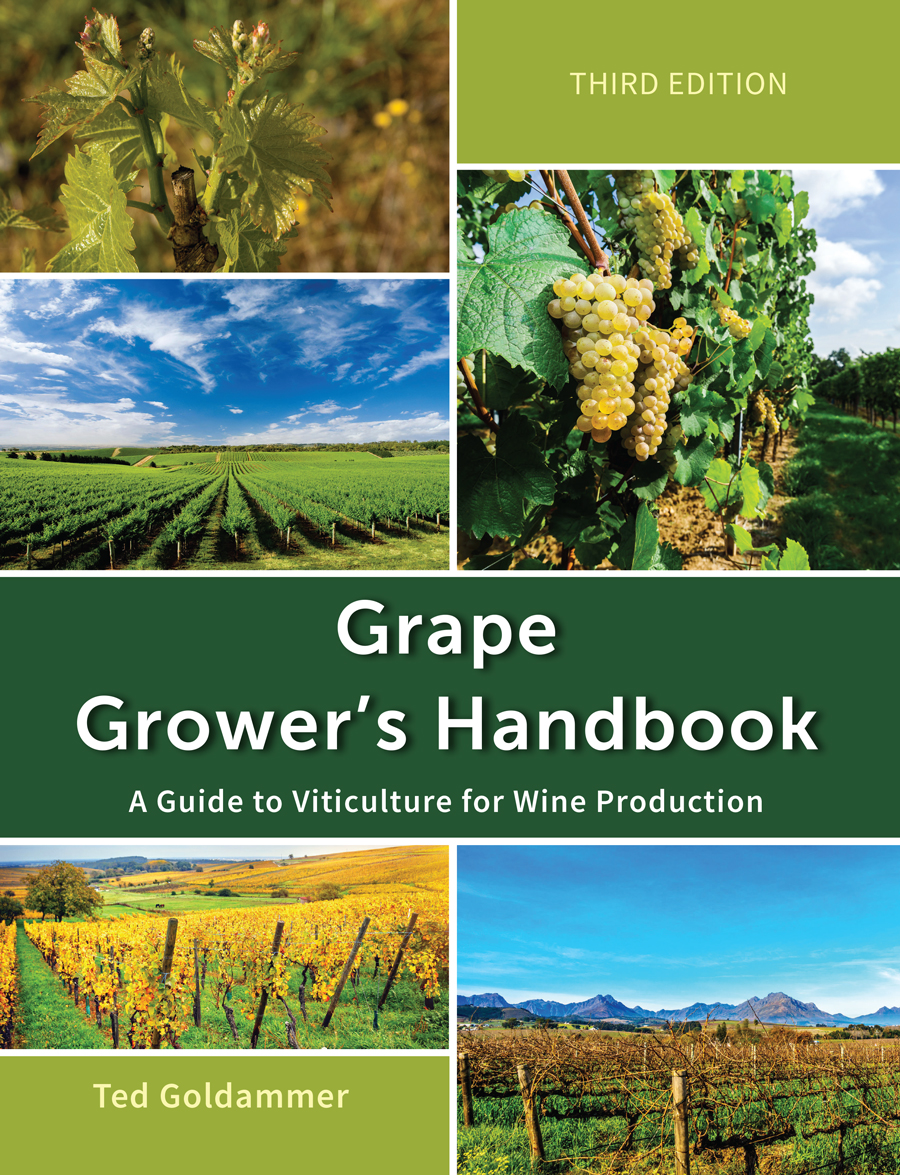Wine Grape Growing
Glossary
B
BALANCED PRUNING. Pruning a vine based on its growth in terms of the amount of one year old wood it produced the previous growing season.
BANDING. The process of applying fertilizer in bands along the soil surface.
BASE (BASAL) SHOOT. A shoot arising from a bud located at the base of a cane.
BENCH-GRAFTING. Grafting a scion to a rootstock on a bench in the nursery.
BERM. Swath of soil directly under the vine row, can vary from 1 to 3 feet wide. Commonly kept weed-free or mulched to mitigate erosion risk.
BILATERAL CORDON. A trunk that is divided into two branches extending horizontally on a support wire.
BLACK ROT. A fungal disease of the vine, usually found only in the eastern United States.
BOTRYTIS BUNCH ROT. A fungus which can either affect grapes benevolently (as in the Noble Rot, responsible for great sweet wines) or, more commonly, simply spoiling them with mold.
BRIX. Soluble solids or sugar content, measured as percent sugar in juice. It is basically the percentage of sugar in a solution. Brix = grams of sugar per 100 grams of liquid at 68 degrees F.
BROADCASTING. The process of applying fertilizer across the soil surface.
BUD. A compound bud or eye containing the primary, secondary, and tertiary buds located in the axil or each leaf.
BUDBREAK. Refers to the start of the new growing season, when tender green buds emerge in early spring's warm temperatures; typically March in the Northern Hemisphere and September in the Southern Hemisphere. The vines are especially vulnerable to frost at this stage.
BUD FRUITFULNESS. The ability of the bud to produce fruit and measurable as clusters per shoot or weight of fruit per shoot.
BUFFER. An adjuvant that lowers and stabilizes the pH of alkaline water.

